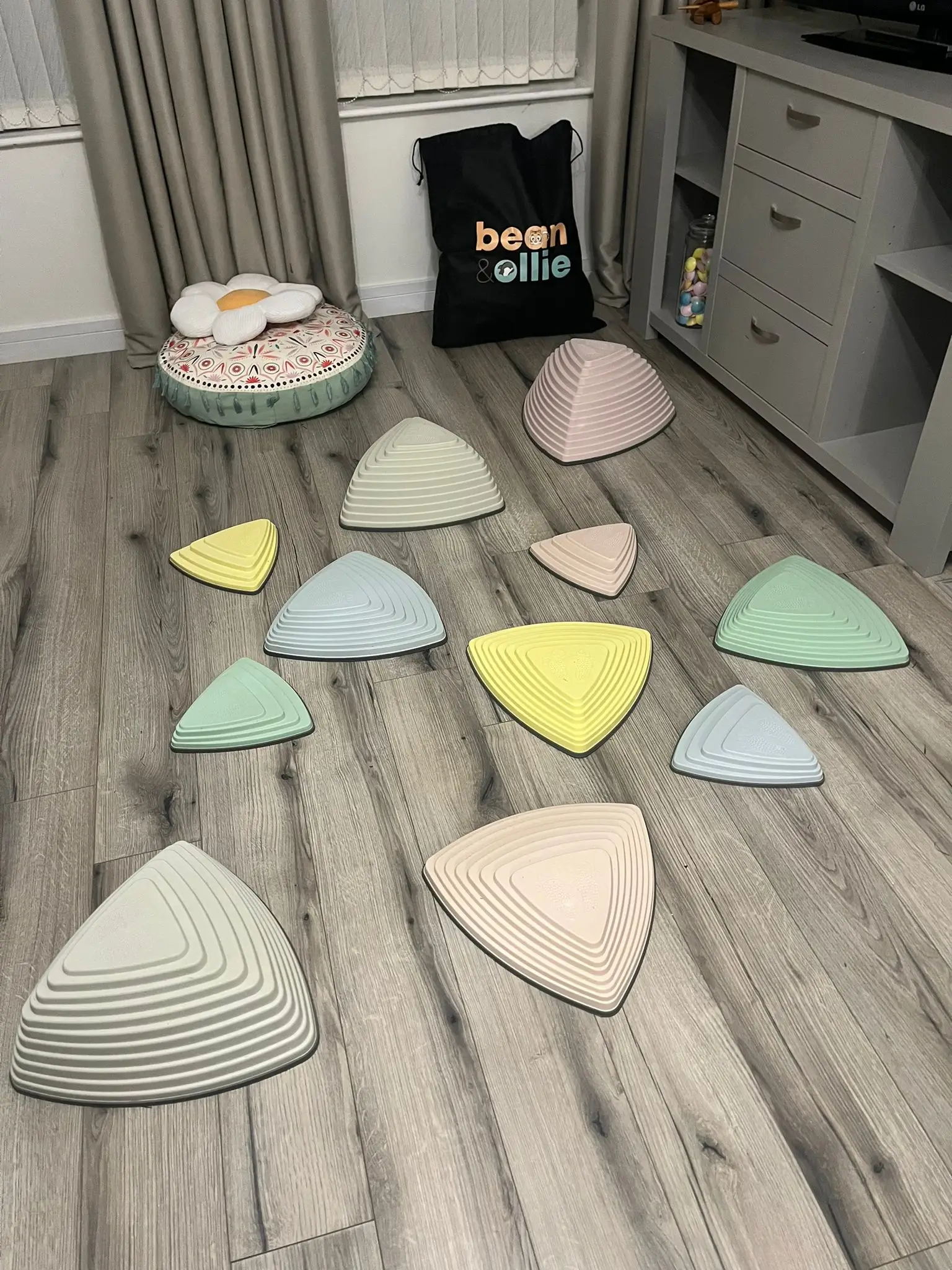Introduction: Gross motor skills, the abilities that involve large muscle groups and movement of the whole body, are fundamental for children’s physical development. As kids grow, they begin to explore their surroundings, interact with objects, and engage in various physical activities. Among the myriad tools and activities that aid in refining gross motor skills, stepping stones stand out as versatile and effective tools. In this blog, we delve into the significance of gross motor skills and explore how stepping stones benefit children’s physical development.
Understanding Gross Motor Skills: Gross motor skills encompass a range of movements involving larger muscle groups, such as those in the arms, legs, and torso. These skills are crucial for everyday activities like walking, running, jumping, climbing, and playing sports. Mastering gross motor skills lays the foundation for more complex physical tasks and promotes overall health and well-being in children.
The Benefits of Stepping Stones: Stepping stones, often found in playgrounds, parks, and even indoor play areas, offer a host of benefits for children’s gross motor development:



- Balance and Coordination: Stepping from one stone to another requires balance and coordination. As children navigate across uneven surfaces, they learn to adjust their body movements to maintain stability. This enhances their proprioception—the awareness of their body’s position and movement in space—contributing to better balance and coordination skills.
- Spatial Awareness: Arranging stepping stones in different patterns and distances encourages children to assess spatial relationships and plan their movements accordingly. Negotiating the gaps between stones helps them develop spatial awareness, a crucial skill for activities like navigating crowded spaces, participating in team sports, and understanding concepts like distance and direction.
- Muscle Strength and Endurance: Stepping stones provide opportunities for children to engage various muscle groups, including those in their legs, core, and arms, as they step, hop, or jump from one stone to another. This repetitive physical activity builds muscle strength and endurance, fostering overall physical fitness and stamina.
- Cognitive Development: Stepping stones stimulate cognitive development by requiring children to strategize their movements, solve problems, and make decisions in real-time. As they plan their route and execute their steps, they enhance their cognitive skills such as decision-making, spatial reasoning, and executive function.
- Sensory Stimulation: The tactile experience of stepping on different textures—smooth, rough, bumpy—provides sensory stimulation, enriching children’s sensory processing abilities. Sensory input from stepping stones contributes to sensory integration, the process of organizing sensory information for effective use, which is essential for learning and development.
- Confidence and Risk Management: Successfully navigating stepping stones boosts children’s confidence in their physical abilities. By taking calculated risks and overcoming challenges, they learn to assess risks, make judgments, and develop resilience—a valuable skill set that extends beyond physical activities to various aspects of life.

Conclusion: Stepping stones serve as more than just a playful addition to children’s environments; they are valuable tools for enhancing gross motor skills and promoting holistic development. Through the physical challenges they present, stepping stones foster balance, coordination, strength, and cognitive abilities while instilling confidence and risk management skills. Integrating stepping stones into children’s play spaces provides them with opportunities for active exploration, learning, and growth, laying the groundwork for a lifetime of healthy physical activity and development.
Children begin by loving their parents, as they grow older, sometimes they forgive them
